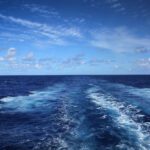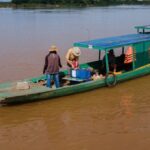Less than a day before it was to be discussed by Canada’s Cabinet, Teck Resources Ltd. withdrew its application for a $20.6 billion oilsands project in northern Alberta, citing the on-going debate around the country’s climate policy.
It’s the latest talking point in a national debate about harnessing Canada’s natural resources and the environmental, economic, and social implications of their industries.
“…Our freshwater lakes, wetlands, ponds, rivers, and creeks and the wildlife that depend on them should not be forgotten in this national conversation about oil development,” says Dr. Diane Orihel, assistant professor at Queen’s University and senior author on a recent paper in the Canadian Journal of Fisheries and Aquatic Sciences.
We know surprisingly little about what Alberta’s special brand of oil, diluted bitumen, does in the wild. The picture becomes even murkier if that environment happens to be a freshwater ecosystem, which tends to be underrepresented in studies on the ecological effects of crude oil.
One way to study this unusual brand of environmental disaster is to experimentally add oil into a lake and watch what happens.
It’s an extreme but powerful approach for studying the fate and effects of contaminants under natural conditions.
One of the best places in the world to conduct this environmentally realistic science is the Experimental Lakes Area (ELA), located in northwestern Ontario, Canada. Here, 58 formerly pristine lakes serve as testing grounds for researchers interested in long-term, large-scale investigations of everything from fertilizers, to heavy metals, and even medications.
But whole- or in-lake experiments are challenging and expensive.
To work out the kinks, Dr. Orihel’s PhD student Jeffrey Cederwall and the rest of the team set up large outdoor tanks using natural lake water, sediment, and plankton from an ELA lake.
These tanks served as mesocosms.
“A mesocosm is a model ecosystem,” explains Dr. Orihel. “It has some components of a real ecosystem, but not all of them. Think of mesocosms as a hybrid of lab and field experiments—mesocosms have more realism than the lab and [are] more controllable than the field.”
Mesocosms capture subtleties that can’t be replicated in the lab, like how sunlight and currents can help breakdown chemicals. They’re also better at representing the bigger ecological picture than lab studies restricted to one or two model organisms.
They dosed the “mini lakes” to replicate small and large spills of diluted bitumen, the form of petroleum extracted from the oil sands after it’s thinned for transport through pipelines. Over the next 11 days, they monitored how each mesocosm’s community of bacteria, phytoplankton, and zooplankton responded to the spill.
Phytoplankton, algae that gain energy from sunlight, and zooplankton, small organisms that feed on plankton, both took heavy hits with oil exposure. Their overall numbers plummeted by over 70% compared with an unexposed community.
Some phytoplankton eventually showed signs of recovery, though whether this was a result of the breakdown of toxic compounds, the renewed light availability as the oil sank to the bottom over time, or the loss of their predators (zooplankton) remains a mystery.
Bacteria, in contrast, seemed to benefit from the oil spill, especially those known to breakdown hydrocarbons, a key component of crude oil.
Together, the loss of phytoplankton and zooplankton as well as the uptick in bacteria represents a considerable change to the food web.
Dr. Orihel notes that “it’s likely that changes in the biomass and diversity of plankton after a [diluted bitumen] spill affect the quantity and quality of food available to higher trophic levels,” meaning that the changes to ecological community structure alone could have big consequences for amphibians, fish, and birds.
These pilot experiments are part of the BOREAL project, lead by Dr. Jules Blais of the University of Ottawa, along which researchers from several universities and government departments, as well as the International Institute for Sustainable Development, which manages the ELA.
“I’m hoping our work will shine a light on the environmental risks of pipelines carrying oilsands products and inform evidence-based risk assessments of proposed pipeline projects.”
Read the paper: Life under an oil slick: response of a freshwater food web to simulated spills of diluted bitumen in field mesocosms in the Canadian Journal of Fisheries and Aquatic Sciences.




